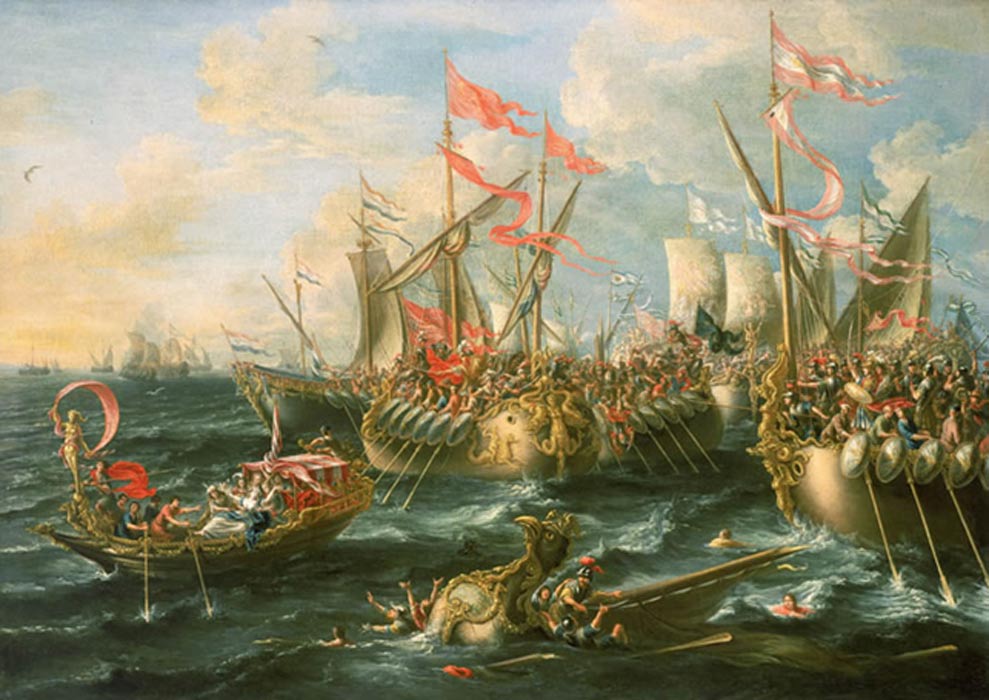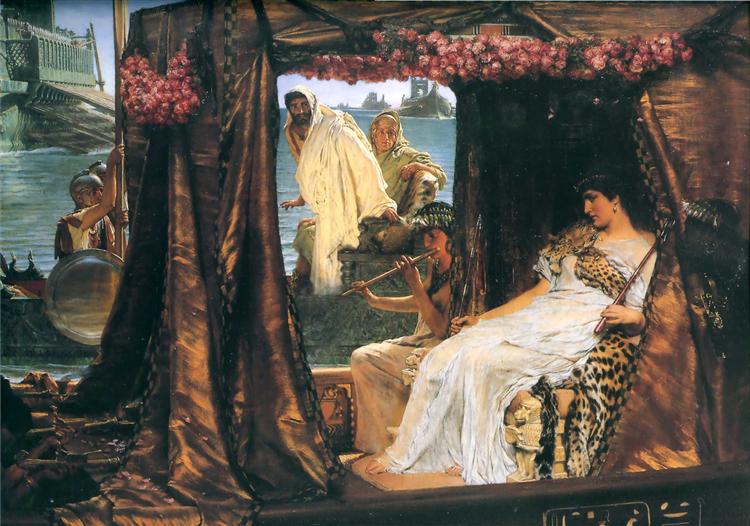by Brittany Marie Garcia
The story of Marc Antony and Cleopatra is a love story of seduction, exotic locations, love-triangles, family, politics, war, and suicide. And, just to make it more interesting, their tumultuous affair is connected to the rise and fall of both the Roman and Egyptian empires. And so, it is easy to see how this relationship has been an intriguing tale for centuries – with examples from Plutarch’s retelling to Elizabeth Taylor’s portrayal to the HBO Rome Series.
While there are countless images representing the romantic and tragic lives of Marc Antony and Cleopatra, there is an extraordinary, newly found item that perhaps shines a new light on the infamous couple… and it comes in the shape of money.
A recent archaeological discovery in Tel Bethsaida (Northern coast of the Sea of Galilee) yielded a coin with the images of these notorious lovers.


This curious coin, despite its discovery in Tel Bethsaida, was actually minted in the port of Akko (known today as Acre) in the last half of 35 BCE and/or the first half of 34 BCE. Made of bronze, the coin is only the approximate size of a quarter (21-23 millimeters in diameter).


But let’s delve into the details of this fascinating currency.
On Cleopatra’s side of the coin, one can see the Greek word: ΠΤΟΛΕΜΙδΣ. This word is in the genitive form of the noun ‘Ptolemais’, which means: “of the people of Ptolemais.” Just to bring it full circle, ‘Ptolemais’ is the name for ancient Akko, which you may remember is the location of where the coin was originally minted.
So why would the city of Akko coin metal representatives of Cleopatra and Marc Antony?
Dr. Ariel, head of Israel Antiquities Authority Coin Department, has an answer for this: “The cities of the ancient Middle East had a habit of minting coins bearing the portraits of whoever was in power”. In the time of 35 BCE Antony had had a recent victory over the Parthians (peoples from Northeast Iran and Armenia) as well as had bestowed Armenia to Cleopatra’s sons and Cyprus to her daughter. These events may indicate why the ancient Middle East considered him powerful.
This would lead us to think that there would be a lot of coins with Cleopatra and Antony. However, this is not the case.
Dr. Ariel continued, “Coins with the portraits of Antony and Cleopatra are extremely rare. Only six have been found anywhere in the world.” According to the ancient numismatic reference site Wildwinds.com though, there have been more than six discoveries of Antony and Cleopatra coins. It would stand, however, that only six of the eight coins found are in good condition. The coin recently discovered in Tel Bethsaida would make the seventh.
It has to be asked again then, if the ancient Middle East considered Antony and Cleopatra powerful in 35 BCE (and perhaps other years as well) then why are there not more of these “lovers’ coins?”

‘The Battle of Actium, 2 September 31 BC’ (1672) By Laureys a Castro
Of course we cannot be completely certain of the reason, but it is not difficult to hypothesize that Augustus Caesar may have had them collected and destroyed after his victory at Actium. After all, Augustus did destroy Antony’s portraits after his death. For some reason, however, Augustus allowed Cleopatra’s statues to remain in Caesar’s Temple to Venus Genetrix. Perhaps Augustus admired Cleopatra. Even as a ‘foreigner’, her ambition, cunning, and wit made admiration understandable.
On the other hand, his unforgiving attitude towards Antony may have had to do with Octavia. Antony’s affair with Cleopatra was at the expense of Augustus’ sister and Antony’s wife, Octavia, as well as their children. Because Cleopatra was a foreigner it was understandable, even expected, that she was a less respectable being, but as a Roman male citizen, Antony’s actions were inexcusable.
This could have prompted Augustus to destroy any coin that represented the man who had broken such strong societal conventions. The result is only a few stray pieces that escaped the victor’s retribution.

Therefore it is these rare coins that provide us with a look into Antony and Cleopatra’s policy on their representation, including the portrayal, features, and idealized form. It is uncertain whether they wished to emulate a certain presence, as is suggested by the British Museum, “Antony was said to remind people of the Greek hero Herakles in paintings and sculptures, with ‘… a very good and noble appearance; his beard was not unsightly, his forehead broad, and his nose aquiline’” (Plutarch, Life of Antony, 4).
However, his portrait in the coin seems to have picked up Ptolemaic features, specifically the strong projecting chin of Ptolemy I, the founder of Cleopatra’s dynasty, and the hooked noses of Cleopatra and her father Ptolemy XII.
Maybe this was a reason for the coins to be destroyed? Does it reveal something new about Marc Antony or does it show the bias of the minter in the city of Akko, which was founded by Ptomlemy II Philadelphus in the 3rd century BCE?
We’ll never completely know, but what is certain is that this infamous couple continues to engage, fill, and plague our minds. Though they are long dead and their story known by most, they do not cease to be the topic of much discussion, debate, and obsession.










One comment
Fascinating revelations. And as a bona fide romantic I find the open-endedness of the history enjoyable inasmuch as it leaves room for more possibilities. Thanks for the background … known and unknown .
Trackbacks
Our apologies, you must be logged in to post a comment.